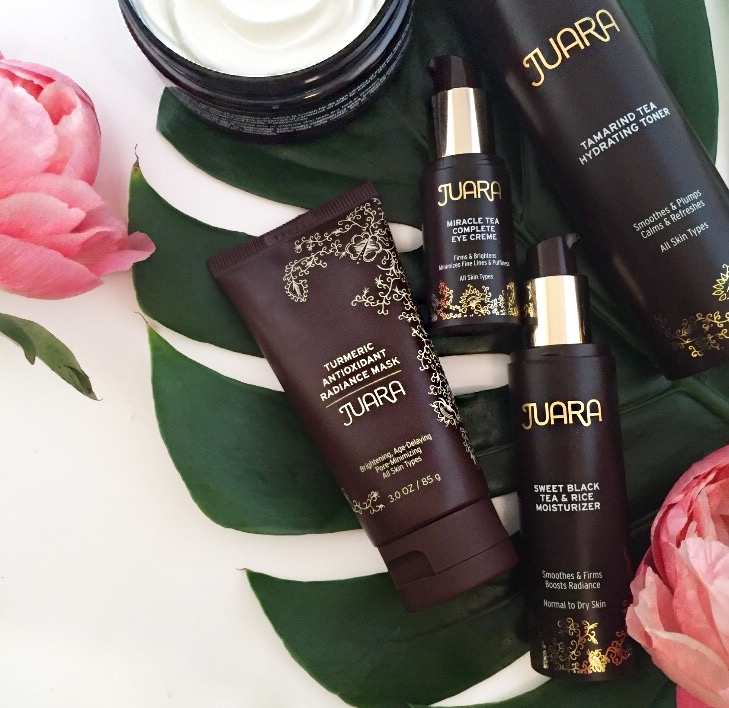LED = Light Emitting Diodes. This is one of my favorite technologies the past few years that I include with almost all of my facial and skincare services, it can even be done as a seperate stand alone treatment without a facial for those that want to come in more often. LED can be done a number of ways. In an office setting, we use the OmniLux LED device it to treat aging skin, acne, and rosacea, and they can be done in a series (of weekly treatments) or just once in a while with your facial, depending on what we are treating. The treatments are painless, relaxing, have no downtime, and safe for almost everyone unless you have a history of epilepsy or on medications that cause light sensitivity like tetracycline.
Now onto the science on HOW this awesome light therapy works! The general function is the LED penetrates through the epidermis into the dermis layer of the skin, energizing the fibroblast cells that are responsible for producing collagen. Collagen and Elastin are produced in cells called fibroblasts and Inside these cells is a smaller cellular structure called mitochondria. Mitochondria are responsible for converting nutrients into an energy carrier known scientifically as Adenosine Triphosphate (ATP). This (ATP) fuels the cell's activities; it basically gives the cells the needed energy to do their job. This is the reason Mitochondria are frequently referred to as the powerhouse of the cell. LED sends light rays into the Fibroblast cells, which in turn excite the Mitochondria into producing in some cases up to 10 times more ATP. This fuels the cell's activities, which causes more of the needed Collagen and Elastin to be produced, as well as other needed materials for the skin. Over time the dermis layer fills up with collagen pushing the fold of the wrinkle out. Collagen helps to plump up the skin thus diminishing fine lines and wrinkles. Nice! The process is similar to plant photosynthesis. the light emitted by the LED is absorbed by epidermal cells and produces a cascade of events. As the light passes through the skin, different components of cells are affected by various wavelengths, stimulating certain beneficial effects:
-stimulates tissue granulation and connective tissue, which is part of the healing process of wounds, ulcers, and imflamed tissue
-reduces MMP-1 (collagenase) in the papillary dermis, therefore increasing collagen deposition and improving skin texture
-reduction in small blood vessels; infrared increases vascularity by increasing formation of new capillaries, a process called angiogenesis.
There also is blue LED light, which can be great for skin types that are sensitive or allergic to topical antibacterial products. The blue LED has its own set of benefits, it causes the development of oxygen radicals that kill P. acnes bacteria without damaging healthy skin. For acne, I recommend using a combo of blue and red devices. The red treats the inflammation and redness and the blue treats the bacterial component.
Here are some great studies showing the benefits of LED, but a quick google search can lead you to hundreds more!
http://media.wix.com/ugd/d80b7e_763ee0dae52e03de53c81b25e9487799.pdf
http://pubs.acs.org/doi/full/10.1021/cg8000703
http://www.ncbi.nlm.nih.gov/pubmed/16414908
http://www.ncbi.nlm.nih.gov/pmc/articles/PMC4479368/
Another way to get the benefits of LED is to try an 'at home' device, which have been gaining popularity the last few years. While an FDA approved LED device for home use will usually have similar specs as the professional devices we use in our office, the main difference will be the number of LED's being used. For example, the machine in our office will have hundreds of LEDS, while an at home device will usually have 25 to 50, so the in office professional treatments will gave you faster results. However if you are diligent with using your at home device, it can absolutely improve your skin, and even be used to prolong the results of your professional in-office treatments. I feel the decision on professional treatments vs using an LED at home, comes down to a few things to consider:
-Time: In office treatment takes about 20 minutes once a week (or twice, depending on how fast you want to finish your series) but at home LED can take up to an hour to treat the full face. However, if you only want to treat a small area of the face, for example eye area, or random acne prone areas, then your home treatment time won't be a huge factor. In office treatments mean you are making a trip to the office, where as using an at home device gives you more flexibility.
-Professional guidance for more serious conditions. If you struggle with rosacea or acne, having professional treatments and monitoring your condition, combined with an effective at home regimen may give you faster, or more effective results.
-Cost. Office treatments cost between $75 to $150 per session, where as the initial investment of a home-use LED device will run around $300 to $500.
Two great devices I recommend often are the Baby Quasar and Light Stim. Recently, I started playing around with a new FDA-approved device from Truth Vitality that has three different modes, red, blue and ultrasound. These are used independently as in they don't work all at the same time, which is nice so you can treat separate areas with the specific modality you need. As for how the ultrasound works, it enhances product penetration and increases fibroblastic activity and collagen formation. You can read more about how the ultrasound works directly from them here. So far I have been really impressed with this device! It's a great price, and easy to use. I will report back on the ultrasound benefits, as they are cumulative, and I'm giving it a full 3 month test run!













